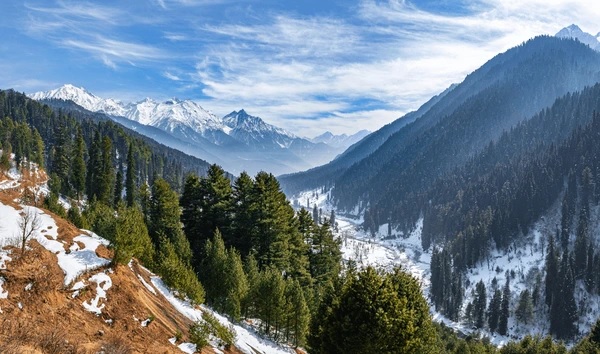Kashmir Telecom Blackout 2025 – How Floods Exposed India’s Digital Fragility
By: Javid Amin | 27 Aug 2025
Valley in Darkness, Cut Off by Silence
When the floods of August 2025 battered Jammu & Kashmir, the Valley was not only drowned in water but also swallowed by silence. Phone calls stopped connecting. Internet lines went dead. Families were cut off from each other, rescue workers struggled to coordinate, and businesses froze mid-transaction.
A telecom blackout turned a natural disaster into a humanitarian crisis.
Instead of being a lifeline in moments of panic, India’s biggest telecom companies—Reliance Jio, Bharti Airtel, and BSNL—revealed their weakest side: no backup, no redundancy, and no plan for disaster resilience.
Kashmir’s Telecom Blackout – A Case Study in Unpreparedness
The Collapse
-
As rains lashed Srinagar, Baramulla, Pulwama, and Jammu, optical fibers snapped. Towers stopped working as power lines fell.
-
By mid-day, the Valley was cut off—mobile, landline, and internet services all collapsed simultaneously.
-
Hospitals, schools, and local businesses couldn’t function. Students preparing for exams had no access to digital resources. Families abroad couldn’t reach loved ones.
The Numbers
-
5+ million people across Kashmir Valley lost connectivity for nearly 48 hours.
-
Emergency lines were down in three major districts.
-
Local ISPs dependent on backbone telecom firms also went dark.
This was not the first blackout. Kashmir, historically, has endured politically motivated internet shutdowns. But this time, the trigger was infrastructure fragility, not policy.
The Human Cost of Telecom Failure
Behind statistics lie real human stories.
-
Families in Panic: A mother in Baramulla said she couldn’t call her son in Jammu hostel for two days. “The flood was outside, but the silence inside was worse.”
-
Emergency Services Paralyzed: Ambulances couldn’t coordinate with hospitals. Volunteers were forced to use word-of-mouth networks.
-
Business Paralysis: Traders lost orders, shopkeepers couldn’t use UPI, and banks saw disrupted transactions.
-
Students Stranded: With schools and coaching centers closed, digital classes were impossible.
Connectivity today is not a luxury—it is survival. Its absence multiplies suffering during disasters.
Telecom Companies – Lifelines or Profit Machines?
The Tariff Game
Reliance Jio and Airtel dominate Kashmir with a combined market share of over 70%. Their strategy:
-
Tariff hikes every 6–9 months.
-
Aggressive cost-cutting—fewer technicians, delayed infrastructure upgrades.
-
Focus on ARPU (Average Revenue Per User) rather than resilience.
The Missing Backup Plans
Unlike in disaster-prone countries, Indian telecom firms:
-
Have minimal backup power solutions (diesel generators last only a few hours).
-
Do not invest in redundant fiber networks for remote regions.
-
Have no public-facing disaster communication strategy.
In short, profits are maximized while consumer safety is neglected.
Global Benchmarks – How Telecom Works Elsewhere
-
Japan: After tsunamis, telecom firms deploy portable satellite towers within hours.
-
United States: FCC mandates backup power at cell sites for 24–72 hours.
-
Europe: Telecom companies are legally required to publish disaster recovery protocols.
Kashmir, prone to floods, landslides, and quakes, deserves the same—but gets none.
Government’s Role – Regulator or Silent Bystander?
The Telecom Regulatory Authority of India (TRAI) and the Department of Telecommunications (DoT):
-
Have no enforceable rules on disaster-readiness.
-
Allow companies to hike tariffs unchecked.
-
Rarely penalize outages, even in crisis zones.
This regulatory silence leaves customers at the mercy of corporate decisions.
Disaster Amplified by Digital Divide
When the blackout hit, the divide between rich and poor widened:
-
Affluent families used expensive VSAT (satellite connections).
-
Ordinary Kashmiris had no alternative—completely cut off.
-
Local businesses without offline modes of payment saw massive revenue loss.
Connectivity is a public good. When monopolies treat it as a commodity, the poorest suffer most.
The PR Spin – Relief Measures or Band-Aid Solutions?
After public anger, Jio and Airtel announced:
-
Free 2–3 days of service extensions.
-
1–2 GB of daily data free for prepaid users.
-
Grace period for postpaid bills.
But critics called this too little, too late.
-
These gestures do not restore connectivity in blackouts—they just delay billing pressure.
-
Without infrastructure investment, such measures are cosmetic.
The Economics – Why Telecom Chooses Profit Over Resilience
Telecom is a capital-heavy industry. In India:
-
Firms spend heavily on 5G spectrum auctions.
-
But cut corners in maintenance and rural infrastructure.
-
Kashmir, being a low-revenue market compared to metros, gets less network redundancy.
This profit-first model is why floods knock down entire networks instead of just localized sites.
The Way Forward – Building a Resilient Telecom Future
-
Mandatory Disaster Protocols: TRAI must enforce backup power, redundant fiber routes, and disaster communication drills.
-
Public-Private Collaboration: Telecom + government must co-invest in satellite and emergency networks.
-
Transparency: Companies should publish annual disaster-readiness reports.
-
Local Empowerment: Incentivize community-based ISPs for backup services.
-
Customer Rights Charter: Legally guarantee service continuity or compensation in prolonged outages.
Voices of Kashmir – What People Say
-
Shazia (Srinagar): “I felt blind. My phone was in my hand, but useless.”
-
Farooq (Anantnag trader): “Without UPI or calls, my shop shut down. Who pays for that loss?”
-
Nadeem (Medical volunteer): “Patients needed oxygen, we couldn’t even call the hospital.”
Connectivity is no longer about luxury—it is about life, livelihood, and dignity.
Conclusion: From Corporate Apathy to Accountability
The telecom blackout during Kashmir’s floods revealed more than damaged fibers—it revealed corporate indifference, regulatory weakness, and the human cost of fragile infrastructure.
Disasters are inevitable. But communication collapse is not.
If telecom giants can raise tariffs every quarter, they can also invest in resilience. If governments can regulate spectrum, they can also mandate disaster safety.
Until then, every storm in Kashmir will not just wash away homes, but also drown the Valley in silence.




